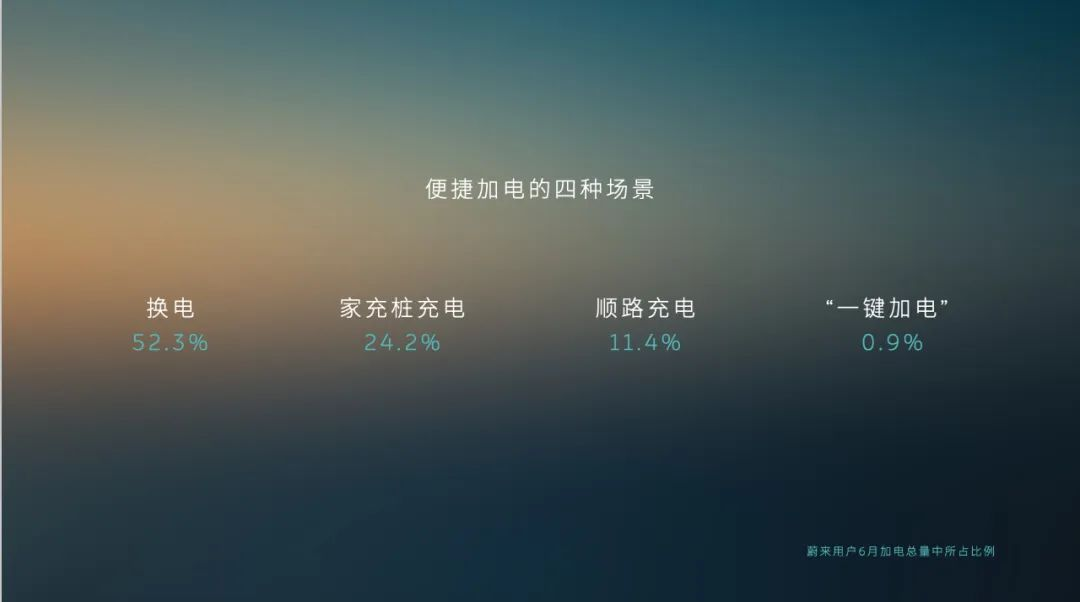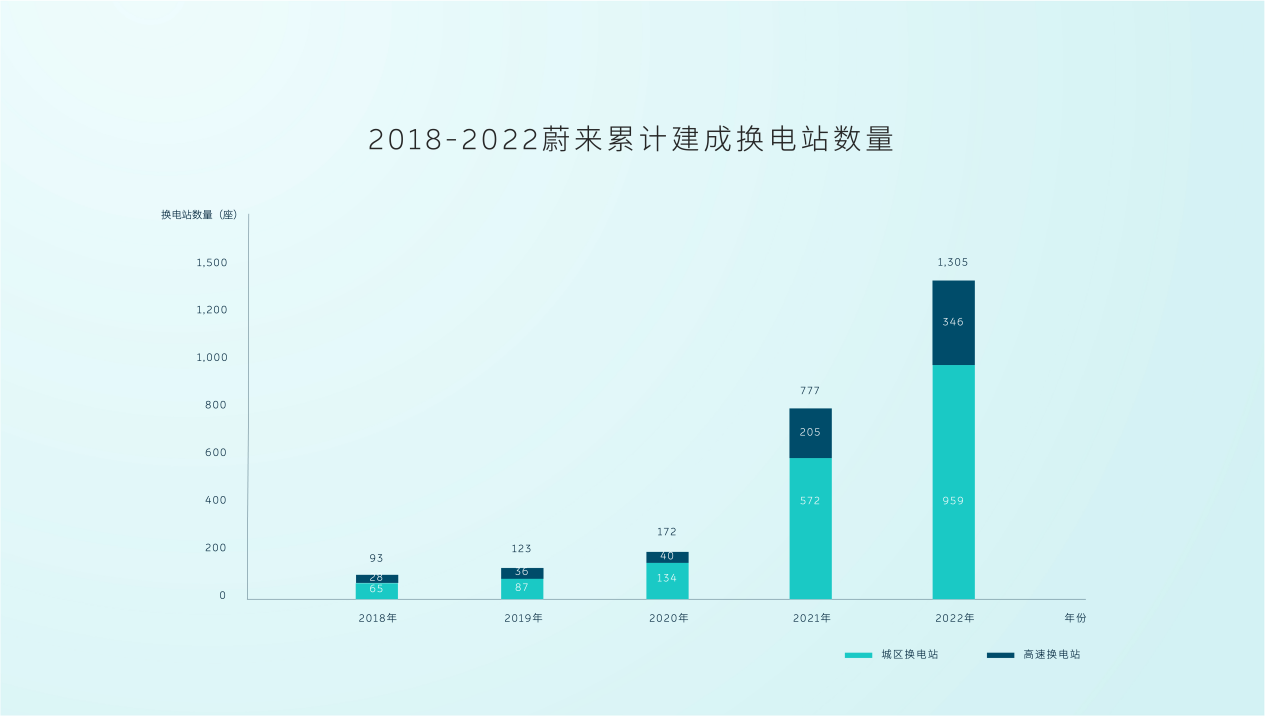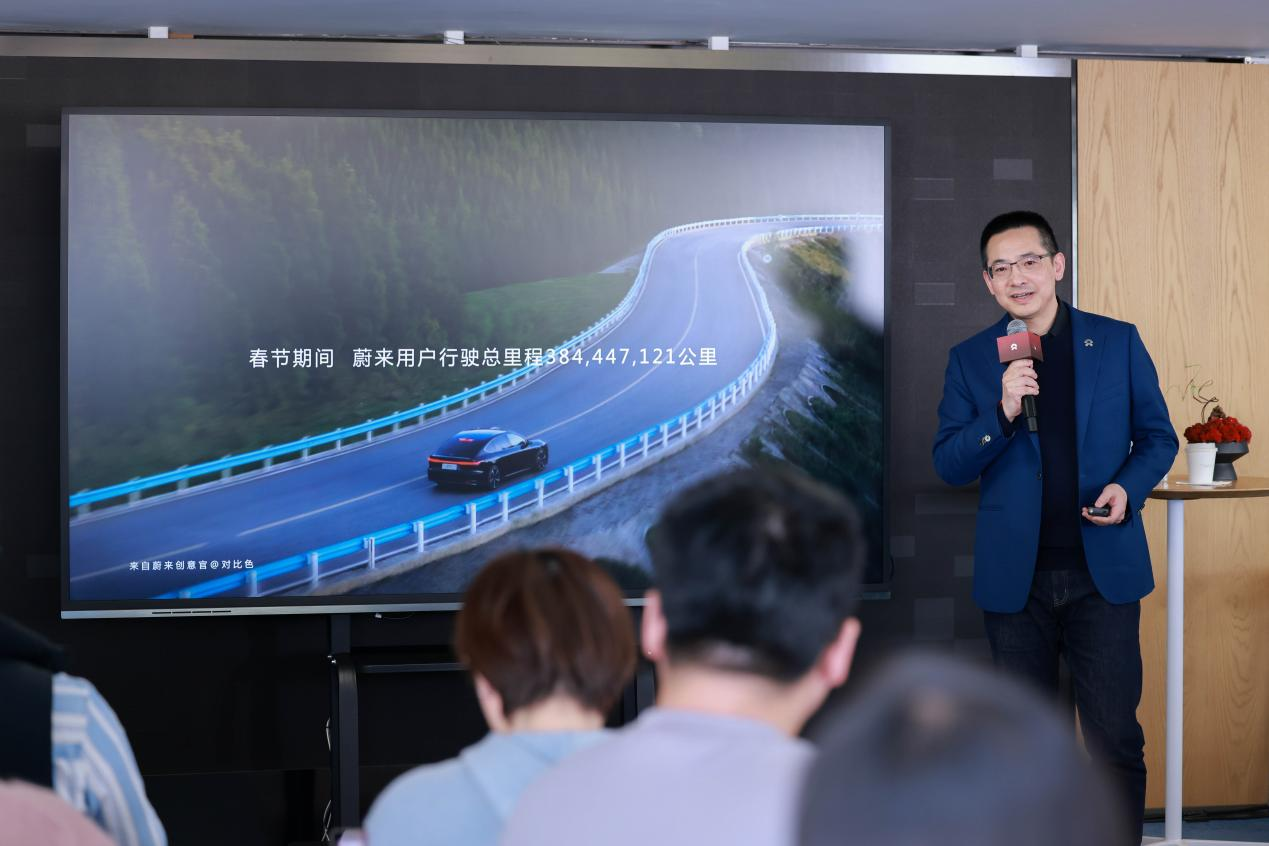Author | Yun Ge
“Companies that are serious about making electric cars should still build their own charging stations.” On February 6, 2023, William Li, co-founder and chairman of NIO, made this call during a media communication meeting.
That day, the NIO Pavilion at Chang’an Street’s Oriental Plaza was packed with journalists, and the atmosphere was lively. Li did not talk about sales figures in his opening speech; instead, he shared the thoughts and feelings of NIO’s 7,563 colleagues who provided service guarantees during the Spring Festival. This is what makes NIO special.
During the Spring Festival, NIO users traveled a total distance of 384,447,121 kilometers, and NIO’s battery-swapping stations provided 1,245,095 battery-swapping services and over 900,000 charging services, offering nearly 200,000 service guarantees to NIO car owners nationwide.
The past year, 2022, was undoubtedly a year worth remembering in the history of China’s new energy vehicle development, not only for NIO but for the entire industry as well.
Despite the impact of the epidemic and various factors, such as “chip shortage” and “power shortage,” the production and sales of new energy vehicles still reached 7.058 million units and 6.887 million units, respectively, an increase of 96.9\% and 93.5\% year-on-year. As the construction of the new energy system, supplementing the power supply has always been one of the key projects that major brands are committed to covering. Tesla and XPeng have been actively building their own supercharging stations to ensure the driving experience of electric vehicle owners under different conditions. New brands, such as Zeekr and Jihou, are also contemplating the layout and construction of charging. NIO, on the other hand, has its unique logic when it comes to supplementing power supply.
Build your own charging stations even if it leads to losses
According to data from the Ministry of Industry and Information Technology, as of the end of 2022, the country had built a total of 5.21 million charging stations, which means there is one charging station for every 2.5 new energy vehicles on average. Based on the vehicle-to-station ratio in 2022, the China Electric Vehicle Charging Infrastructure Promotion Alliance believes that the construction of charging infrastructure can basically meet the fast development of new energy vehicles.
However, the reality is that the utilization rate is low, causing the charging service operators to be in a state of long-term losses.
According to relevant statistical data, the average power utilization rate of public charging stations in China is only around 4\%. To achieve profitability, the utilization rate needs to reach 10\% to 15\%, and Yu Dexiang, chairman of Teld, once said in an interview that Teld had accumulated an investment of about 5 billion yuan in the past few years, with losses exceeding 800 million yuan in the first four years. He even admitted that “Teld’s parent company Techrui almost went bankrupt because of this.”
In this situation, is it necessary for car companies to build their own public charging stations?From the perspective of NIO, the problem is simple, user experience is fundamental.
As NIO’s founder Li Bin said, “Buying a NIO car is not just buying a car, it is a ticket to a new way of life.”

Regarding the current situation of NIO’s charging pile construction, Qin Lihong said during a communication meeting, “As of now, we have built 13,629 charging piles.”
At present, NIO, famous for its “battery swap”, has built the largest number of charging piles among Chinese car brands, with a total of 13,629 built. Moreover, 76\% of NIO charging pile services are for non-NIO brands, and NIO charging piles have extended the travel boundaries of electric vehicle users throughout the industry.
In order to quickly expand the infrastructure construction of NIO’s charging and swapping stations, it is inevitable to spend on construction and service costs. NIO has also built a total of 52 Power Up Plan destination charging routes. Some people have said, “This is not just the construction of charging stations, it is also the construction of travel routes.”
Today, NIO is still a loss-making company, but is willing to spend a lot of money on infrastructure construction. The most fundamental reason is that customer service is paramount.
Regarding the issue of the cost of the unlimited free battery swap service for NIO car owners during the Spring Festival, NIO Energy Senior Vice President Shen Fei said, “I went for a run early in Beijing and saw a competitor’s billboard in Wangfujing. NIO did not do this. Instead, we invested the money saved on billboards into customer service.”
Not just building, but also opening up to the public as much as possible
It is worth noting that during the Spring Festival, the total order volume of NIO’s public charging piles exceeded 900,000, and 76\% of the serviced brands were from other car makers. NIO car owners accounted for 24\% of the electricity consumed, followed by BYD, which consumed more than 4 million kWh, and Tesla, which consumed nearly 3.7 million kWh, was in third place.
Faced with the situation of a large number of car maker users flocking to their own charging stations, Qin Lihong jokingly said during the communication meeting, “I urge companies that are serious about making electric cars to build their own charging stations and open them up to everyone. If we don’t open up to each other, ultimately users will be the ones who suffer.”Many people don’t understand why NIO is “making wedding dresses for others” in such a fiercely competitive market.
In fact, this is a part of NIO’s values and a reflection of its competitiveness. “Every charging pile of NIO is open to all electric vehicles in the industry. These more than 13,600 charging piles are not only the charging piles of NIO owners, but also the charging piles of all electric vehicle users in China, making them public facilities. Therefore, electric vehicles are not just a business but also a public cause. We call for everyone to stick to the public cause, after all, the facilities of electric vehicles are still in the early stage of development, and we need to consider the complete travel chain of vehicle owners.” said Qin Lihong.
Shen Fei also expressed at the communication meeting that “we still hope that the invested charging piles or battery swapping stations can make the best use of the resources, better serve NIO users, and improve the charging experience of users in the entire industry.”
In the future, NIO will find a better balance between openness to the public and priorities for NIO users to ensure that more users can conveniently charge their electric vehicles.
Sharing of charging piles is not the first time that NIO has proposed this in public places. In January 2022, the NIO APP launched a private pile sharing mode. As early as December 2019, NIO and XPeng shared their charging piles, and the charging piles of both brands were available to both parties.
In addition to automakers, the government also has a positive attitude towards “private pile sharing.”
In May 2021, the National Development and Reform Commission and the National Energy Administration released the “Opinions on Further Improving the Service Guarantee Capability of Charging and Swapping Infrastructure (Draft for Solicitation of Opinions)”, proposing to improve the construction and promotion mechanism of residential community charging piles and encouraging new models such as “shared nearby parking space” and “multiple cars sharing one charging pile.”
The “Development Plan for New Energy Vehicle Charging and Swapping Facilities in Beijing during the 14th Five-Year Plan Period” issued by the Beijing Municipal Urban Management Commission on August 5 also clearly stated that it encourages the private pile sharing model and the construction of intelligent charging piles with orderly charging control functions.
With the active promotion of the government and enterprises, in the future, the sharing of charging piles may no longer be an idealized model, but an effective mechanism that can truly help new energy vehicle owners solve problems and improve their user experience.
NIO Power: More than just charging piles
“You are only responsible for driving, leave the rest to NIO.” This is a classic slogan of NIO Power and a key attraction for many car owners.
NIO Power has constructed a full-scenario charging network based on user driving scenarios to fully meet user needs. This is the origin of NIO’s energy strategy of “rechargeable, swappable, and upgradable.”
In January of this year, NIO announced that from January 13 to February 5, all 346 highway charging and swapping stations nationwide provide unlimited free battery swapping service to all NIO vehicles (excluding operating vehicles), and the highway service area swapping stations will operate 24 hours a day. During the Spring Festival, NIO’s swapping stations provided 1,245,095 battery swaps for users.
Since NIO’s first battery swap station was put into operation in Nanshan Science and Technology Park in Shenzhen in April 2018, NIO has been engaged in the battery swapping business for five years. As of the end of 2022, NIO has built 1,305 battery swapping stations, including 346 high-speed battery swapping stations. At the NIO Day in December 2021, William Li announced plans to add 400 battery swapping stations by 2023.

Li Hongqi admitted that during the first Spring Festival after the lifting of the pandemic, NIO wanted to conduct a stress test on its own service guarantee system, so it launched a free and unlimited battery swapping service for high-speed roads. During the communication meeting, he said: “After the Spring Festival test and user behavior verification, the swapping stations have a guarantee effect on user travel. Now we realize that NIO doesn’t have too many swapping stations, but too few. This year, we will consider adding more swapping stations, more than the 400 announced at NIO Day 2022.”
Currently, NIO has formed a high-speed swapping network of 5 north-south lines and 3 east-west lines in 8 major cities in China, and plans to achieve a network layout of 9 north-south lines and 9 east-west lines by 2025. This also means that after completion, NIO’s car owners can achieve battery swapping that is even more convenient than refueling when driving on highways.
NIO’s various “unappreciated efforts” are simply aimed at continuously providing users with a full-range experience that exceeds their expectations. The free battery swapping and service guarantee during this Spring Festival is a practical test of the competitiveness of the NIO system and an innovative move that truly meets user needs and provides convenient services.
For the future, it is hoped that more brands can work harder to build consumer ecology and service constructions like NIO to ensure consumers’ car use experience.
这是一个 Markdown 文档
以下是一段含有 HTML 标签的文本:
这是一个含有强调的段落。
这是一个带有
代码的引用。
翻译后的英文 Markdown 文本为:
This is a Markdown document
The following is a text containing HTML tags:
This is a paragraph with emphasis.
This is a quote with
code.
This article is a translation by ChatGPT of a Chinese report from 42HOW. If you have any questions about it, please email bd@42how.com.
